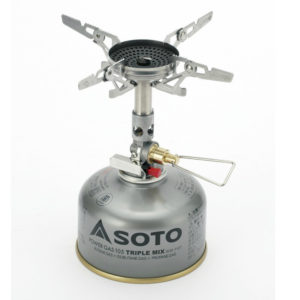Choosing A Backpacking Stove
 Backpacking stoves have continued to get smaller, lighter, and easier to use. With advances in stove design, improvements in pre-prepared backpacking food, more people are choosing a backpacking stove. This has resulted in more choices for consumers, who are often uncertain about what advantages different types of stoves offer.
Backpacking stoves have continued to get smaller, lighter, and easier to use. With advances in stove design, improvements in pre-prepared backpacking food, more people are choosing a backpacking stove. This has resulted in more choices for consumers, who are often uncertain about what advantages different types of stoves offer.
The two most common types of backpacking stoves are canister stoves and liquid fuel stoves. Canister stoves use pressurized disposable canisters that contain a mixture of butane and propane. Canisters are already pressurized. There is no need for pumps or heavy fuel bottles. This makes the canister stoves small and light. The canister stove simply screws onto the canister. If it is equipped with a Piezo ignition can be ignited reliably with the push of a button.
Liquid fuel stoves use small hand pumps to pressurize the fuel along with mechanical devices to atomize the fuel. These stoves have seals and moving parts that may need maintenance from time to time including lubrication and seal replacement. Liquid fuel stoves are generally heavier, but provide fuel options. Depending on the stove, liquid fuel stoves can run on various fuels including Coleman Fuel, Kerosene, or even Gasoline.
Choosing A Backpacking Stove
This flexibility can be a huge advantage; not only because liquid fuel is cheaper, but it is easier to find. Liquid fuel stoves also tend to heat better in temperatures near freezing. Canister stoves become stubborn to light. They take significantly longer to heat as temperatures drop near or below freezing. These are just a few of the factors to take into consideration when you are choosing a backpacking stove for your travels.
The type of cooking that will be done is also important in selecting a stove. If the sole purpose of the stove is to heat water to hydrate pre-prepared backpacking food and make hot drinks, almost any stove will do. If simmering of sauces, soups, or noodles is required, then the small torch like burner heads on many canister stoves should be avoided as they tend to heat unevenly and burn the food directly above the flame. Larger burner heads are generally better for simmering food even though they add size and weight to the stove.
Understanding the advantages and disadvantages of the different types of stoves will help in selecting the stove best suited for the conditions.
For more backpacking information and ideas, click here.
You can follow any responses to this entry through the RSS 2.0 feed. You can leave a response, or trackback from your own site.


Leave a Reply